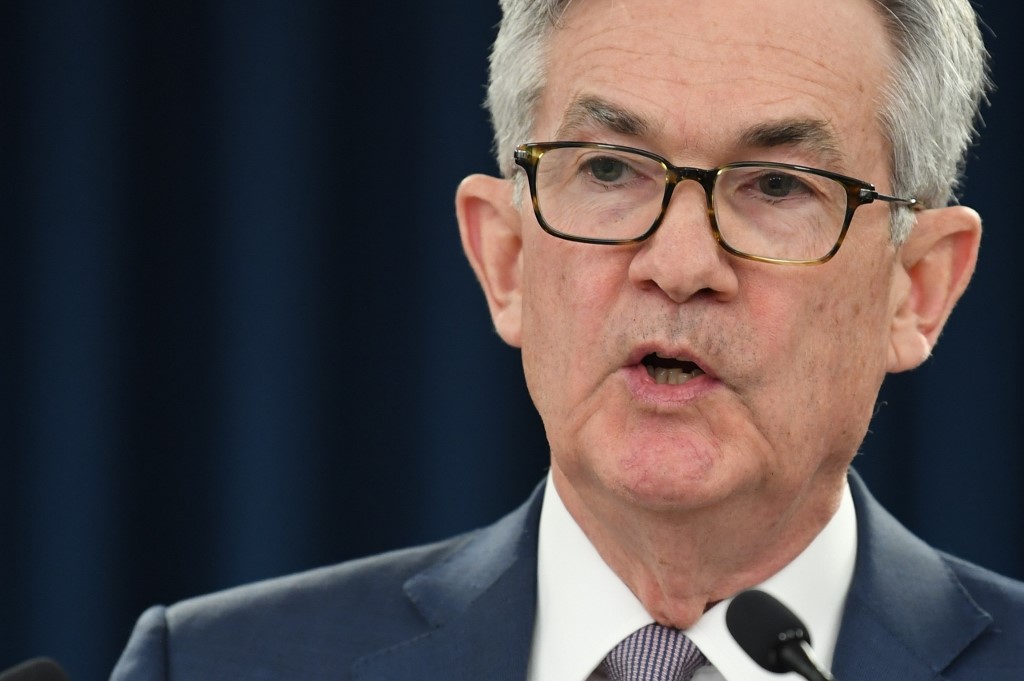The US Federal Reserve on Wednesday announced a more aggressive stance to quell the wave of price increases that has affected cars, housing, food and other goods and become a political liability for Joe Biden, the US president.
The central bank’s policy-setting Federal Open Market Committee (FOMC) announced it would accelerate the phase-out of its stimulus measures to end them in March, which would then allow it to as soon as May deploy its most powerful weapon against inflation by raising lending rates.
While acknowledging the risk that the price increases could continue, Fed chair Jerome Powell nonetheless maintained a steadfastly upbeat picture of the US economy, which he said was poised to continue its strong recovery.
“Economic activity is on track to expand at a robust pace this year, reflecting progress on vaccinations and the reopening of the economy,” Powell told reporters following the two-day FOMC meeting. “Aggregate demand remains very strong.”
Powell admitted recently that he and his colleagues miscalculated how far prices would rebound in the wake of the pandemic crisis, and pledged to fight back.
But on Wednesday, he also stressed that any actions taken will depend on the economy’s performance, which still faces risks from the Covid-19 pandemic.
“We need to see how the inflation data and all the data evolve in coming months, but we are prepared to use our tools to make sure that higher inflation doesn’t get entrenched,” Powell said.
That suggested the the Fed lacked a definite strategy for its taper programme, said Ellen Zentner, chief US economist at Morgan Stanley.
“I think means there is no playbook for how long the Fed waits to hike after tapering ends, or to reduce the balance sheet after it begins hiking,” she said.
Ready For Rate Hikes
The FOMC in early November made the first step to taper its bond purchases, lowering the total by $15 billion a month, which would have ended the programme around June.
Now, it will cut by $30 billion a month, ending the programme two months earlier and putting the Fed in a position to raise the benchmark interest rate from zero, where it has been since the start of the pandemic in March 2020.
Powell said “the economy no longer needs increasing amounts of policy support” and painted a picture of a strong economy “in which it’s appropriate for interest rate hikes”.
The Fed said it will keep interest rates low until labour market conditions improve further, but in forecasts published alongside the FOMC statement, central bankers signalled they expect as many as three rate hikes next year.
Stock markets cheered the news, closing the day with solid gains.
“We anticipate two rate hikes next year if inflation decelerates sequentially in coming quarters as projected,” said Ellen Gaske, lead economist with the global macroeconomic research team at PGIM Fixed Income.
“This would require the current torrid demand conditions to come off the boil and supply chain problems to improve,” she said.
Doves Become hawks
Hoping to avoid negative political fallout, Biden’s team and Fed officials – who are independent from the White House – for months have tried to reassure nervous consumers that the price jumps were mostly due to temporary knock-on effects of the pandemic, such as semiconductor shortages and shipping snafus.
But the increases have yet to subside. Annual consumer prices saw their biggest jump in nearly four decades in November, producer prices rose sharply last month and retail sales data released Wednesday showed price hikes are starting to tamp down spending.
In its quarterly economic projections, the FOMC’s closely-watched “dot plot” showed all committee members expect at least one rate hike next year, and 12 of the 18 members see three or more.
The latest release shows the median forecast inflation rising to 5.3% this year – well above the central bank’s 2% goal – but falling to 2.6% by the end of 2022.
“Ultimately, we also expect the Fed will be unable to hike the fed funds rate as high over this cycle as they are currently projecting, anticipating the fed funds rate is likely to top out below 2%,” said Gaske.
While raising borrowing rates is an effective inflation-fighting weapon, it is also a blunt tool that could short-circuit the US economy’s recovery, which remains beset by supply chain snags and new variants of the virus.
Powell acknowledged the risk from the spread of the Omicron variant, but said officials see growth continuing, “Notwithstanding the effects of the virus and supply constraints.”
- AFP with additional editing by Jim Pollard
ALSO READ:
US Fed To Scale Back Bond Purchases
Australian Central Bank Loses Control of Bond Yields
Treasury Yields Continue Downward Drive After Fed Minutes
























